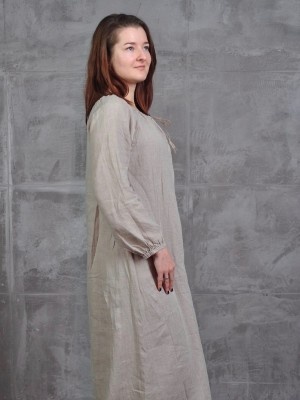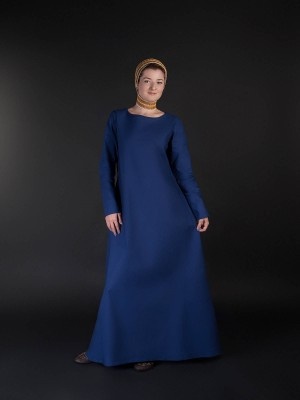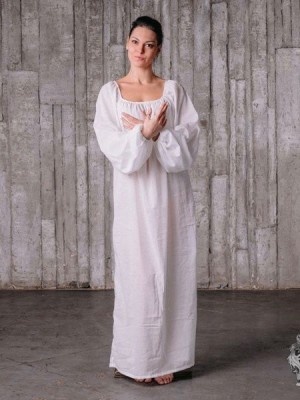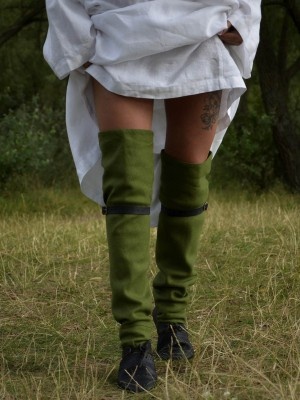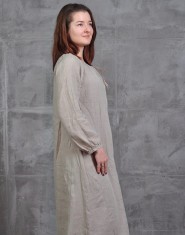A propos Sous-vêtements pour femme
Welcome to section “Women’s underwear”, where you can find different models of medieval undershirts for beautiful ladies.
We tailor every item by hands according to the parameters of customer. Undergarment is based on the historical analogues, which you can see on medieval paintings.
Few clicks are required to order one of these pieces of underclothing.
- Open the wished item;
- Choose material for your underdress (cotton, linen or silk);
- Define the colour of product;
- Select required size.
If there are some difficulties with choosing, please contact our manager. We will help you to specify your size and required model.
Once all options have chosen, you need to add item to the cart and make a payment. After that, manager will contact you with measurement request and specification of order’s details.
If you did not find the wished piece of clothing in this section, we can make it individually for you. Just send picture with detailed description to [email protected]. Then we will advise you price and discuss details of order.
In France and other European countries, undershirt called chemise. Hygienical purpose of chemise was the main: it protected upper dresses of sweat. Only representatives of the upper social classes could afford chemise of thin cotton or bleached linen. The richest women had underclothing of superfine natural silk. It was believed, that such natural fabric scared fleas and lices, which were crawling in every palace in Europe in those times.
Underdress had very simple cut. Length of women’s chemise was usually to ankle – that way it covered all woman’s body. Colour of chemise was white or natural-colored. Long sleeves were straight or flared a little, often with lacing on the wrists. Neckline had square or round shape. In the XIV century, tailors started to add lacing to the neckline too, so when lacing had been tighten, pin-tucks were appearing. Around this time, sleeveless undershirts came into fashion among Italian nobility. Such clothing was held on the shoulders with not narrow fabric straps or laces.
As chemise was not visible from the upper clothing, it did not have any decorations. In the XV century, cuts of fancy porpoints and surcoats allowed for showing the undergarment. So, chemises had got such decorations as golden thread, beads or even pearls. Women of fashion were widening armholes, expanded necklines and making additional cuts on the dresses to demonstrate their material welfare.
Stocking were strictly men’s clothing in the early Middle Ages. It was considered to be very indecent and vulgarly for women to wear stockings. German and Spanish crusaders borrowed this piece of clothing from the Arabs and didn’t come up trumps: stockings were perfectly protecting legs from the direct contact with plate armour.
Shortly, women started to wear such garment as well. Besides, their stockings were shorter, than men’s one. Such short chausses were fixed under the knee with leather or fabric strings. Tailors were making stockings of cotton or wool. To the XV century, manufacture of stockings had expanded: schools of stocking knitters had being opened in England and other countries. Therefore, girls from poor families could master this craft and earn living.

